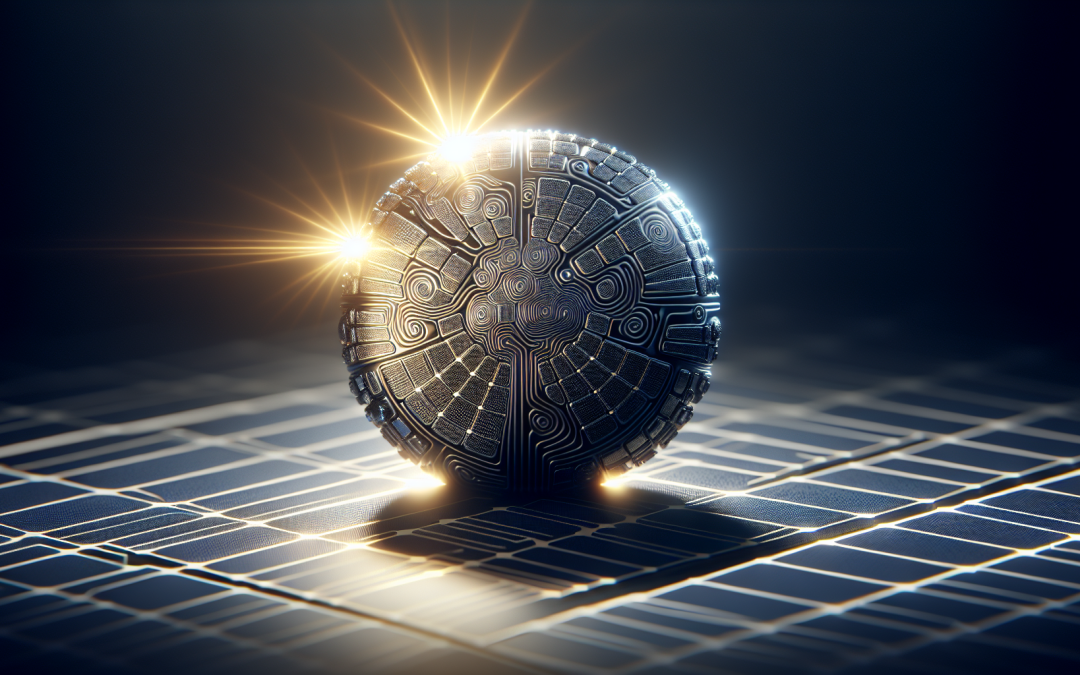Are you curious about the essential components of a solar panel? Look no further! In this article, we will provide you with an overview of the key elements that make up these incredible energy-generating devices. From photovoltaic cells to inverters, each component plays a vital role in harnessing the power of the sun. So, whether you are a solar enthusiast or simply interested in understanding how solar panels work, join us as we unravel the world of solar panel components. Let’s embark on this enlightening journey together!
Solar Panel Components
When it comes to solar panels, there are several key components that make up these incredible renewable energy systems. Understanding each component and its role is essential for anyone interested in harnessing the power of the sun. In this article, we will explore ten crucial components that are commonly found in solar panels.
1. Solar Cells
At the heart of every solar panel are the solar cells. These small, square-shaped devices are responsible for converting sunlight into electricity through the photovoltaic effect. Made from silicon, solar cells generate a direct current (DC) when exposed to sunlight. Multiple solar cells are connected together to form a solar module or panel.
2. Frame
The frame of a solar panel serves as the backbone, providing structural support and rigidity. Typically made from aluminum, frames are designed to withstand various weather conditions and protect the solar cells from any external damage. The frame also allows for easy installation and mounting of the solar panel onto rooftops or structures.
3. Encapsulation
Encapsulation refers to the protective layer that covers the solar cells. Usually, a sheet of tempered glass is used to encapsulate the cells, providing them with physical protection and increasing their longevity. This layer also helps to enhance the panel’s efficiency by allowing maximum sunlight penetration while minimizing reflection or absorption losses.
4. Backsheet
Located on the rear side of a solar panel, the backsheet acts as an additional protective layer. Made from a polymer material like Tedlar or TPT (Tedlar/PET/Tedlar), the backsheet shields the solar cells from moisture, dust, and various environmental factors such as UV radiation and temperature fluctuations. This component plays a critical role in the overall durability and performance of the solar panel.
5. Junction Box
The junction box is a crucial part of the solar panel that houses the electrical connections and ensures proper functionality. It serves as the central point where the solar cells’ DC output is collected and transformed into usable electricity. Additionally, the junction box provides protection against overcharging, excessive heat, and other electrical hazards.
6. Connector Cables
Connector cables serve as the link between the solar panel and the rest of the solar system. They transmit the electricity generated by the solar cells from the junction box to the inverter or other electrical components within the system. Designed to withstand outdoor conditions, these cables are made of durable materials that can endure UV rays, moisture, and extreme temperatures.
7. Mounting Hardware
Mounting hardware includes brackets, rails, and hardware fasteners that secure the solar panel in place. They play a vital role in ensuring the stability and positioning of the solar panel, especially in areas prone to strong winds or severe weather conditions. Properly installed mounting hardware is essential for maximizing the energy production of the solar panel and protecting it from potential damage.
8. Inverter
The inverter is a vital component of any solar energy system. Its primary function is to convert the DC electricity generated by the solar panels into alternating current (AC) electricity that can be used to power household appliances and electrical devices. Inverters also regulate and optimize the flow of electricity, synchronize with the grid, and ensure safe operation of the entire solar system.
9. Monitoring System
A monitoring system allows you to keep track of the performance and efficiency of your solar panel system. This system provides real-time data on the amount of electricity generated, energy consumption, and any potential issues or malfunctions. By monitoring the system, you can optimize its efficiency, identify any maintenance requirements, and ensure that you are getting the most out of your solar panel investment.
10. Battery Backup System
A battery backup system provides electrical storage for unused or excess electricity generated by the solar panels. These batteries can be charged during the day and used during cloudy or low sunlight periods, ensuring a continuous supply of electricity. Battery backup systems are particularly useful for off-grid installations or during power outages, allowing you to rely on solar energy even when the sun isn’t shining.
In conclusion, solar panels consist of various components that work together to harness the sun’s energy and convert it into usable electricity. Understanding these components and their functions is vital for anyone considering solar energy as an alternative or supplemental power source. By familiarizing yourself with these components, you can make informed decisions when choosing solar panel systems and ensure optimal performance and longevity. So, take the first step towards a greener future and explore the possibilities of solar panel systems today!




